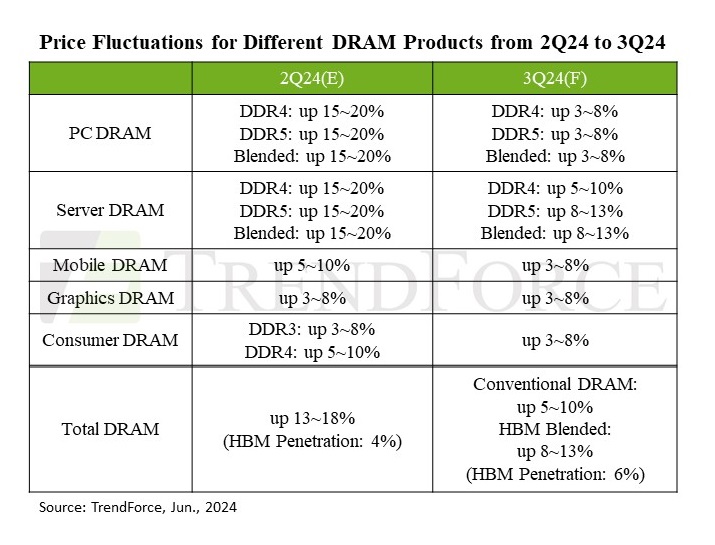As demand for AI computing power and data centers continues to grow, so does the need for certain key computer components, including memory. This serious server demand boost, and the increase of HBM share in factory production, means PC DRAM prices could jump between 3% and 8% QoQ, according to market research firmTrend Force.
Price rises are never welcome, but forecast rises are smaller in scale compared to price increases seen in the previous quarters,with prices rising by 10% to 15% between January and March. It’s estimated that many manufacturers and retailers still have significant inventory of PC DRAM, plus the consumer demand for memory remains stable, so there isn’t much pressure on the consumer and retail side for DRAM. We can see this with spot pricing for DRAM, which iscontinuing with its downward trendsince the end of May.

PC DRAM production is a different story, however. Both SK hynix and Micron HBMsupplies sold outuntil late next year. While this might not directly affect the production line for PC DRAM, companies might switch over production to HBM, thus reducing output for consumer memory modules.
Aside from system memory, VRAM is also affected by HBM and server RAM demand, with its price expected to increase by the same 3% to 8% QoQ, according to TrendForce figures. But the biggest driver of this increase is the pending arrival ofnext-generation RTX 50-seriesGPUs, which arerumored to arrive in Fall 2024. These graphics processors are set to come equippedwith GDDR7 VRAM.

Even Intel’s second-generation Battlemage Arc GPUs, which areexpected to arrive before the holidays, are rumored to use the newer VRAM tech. As GDDR7 is 20% to 30% more expensive than GDDR6, they will push the average prices of VRAM up. This is especially true as graphics card manufacturers and their board partners order more GDDR7 memory as they start to verify the performance of their latest products.
Mobile device markets are also forecast to feel the influence of modest increases in RAM prices. Although manufacturers seem intent on increasing prices for smartphone manufacturers, most buyers still have ample supply, so they’re unlikely to engage in negotiations with RAM suppliers for now.

Price increases are unwelcome, but they’re part and parcel of inflation. As long as supply keeps up with demand, we should not see any shocks that will cause PC part costs to skyrocket in the near term.
Get Tom’s Hardware’s best news and in-depth reviews, straight to your inbox.
Jowi Morales is a tech enthusiast with years of experience working in the industry. He’s been writing with several tech publications since 2021, where he’s been interested in tech hardware and consumer electronics.